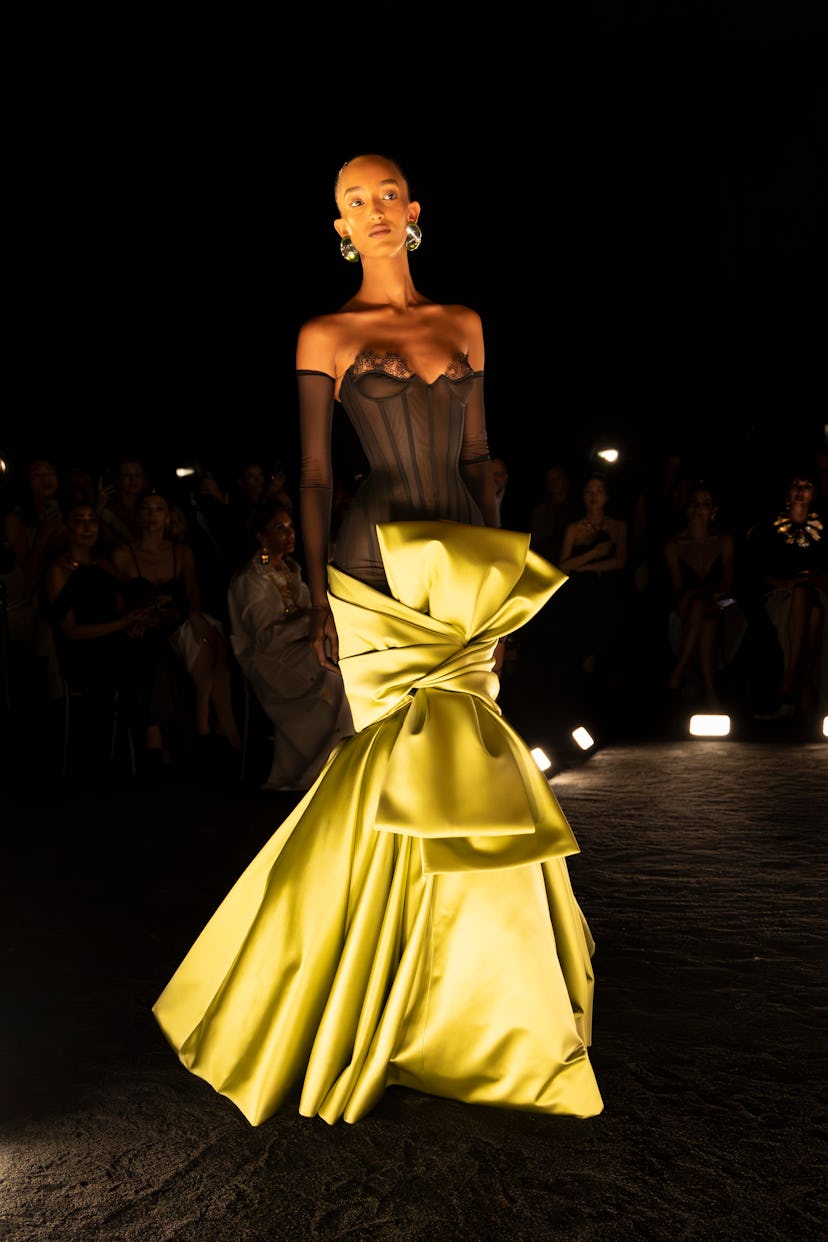Schiaparelli Couture Proves “People Don’t Buy Schiaparelli, They Collect It”
“That devotion is inspired by a relationship between client and creation,” designer Daniel Roseberry said of his fall 2024 collection.

On a hot Monday morning in Paris, Schiaparelli creative director Daniel Roseberry presented his fall 2024 couture collection—one full of enigmas and mesmerizing shapes. Instead of holding his show at the usual Petit Palais museum location, guests traversed into a subterranean, pitch-black, cavernous room of the Hôtel Salomon de Rothschild in the 8th arrondissement; Doja Cat, Kylie Jenner, and Selma Blair sat front row, dressed in a trio of the brand’s extraterrestrial looks. On Roseberry’s mind this season? Schiaparelli, the woman. “A glorious enigma, she was (depending on who you asked) elusive or scandalous, shocking for her freedom, her lack of inhibition, and her apparent inability to care about convention,” the designer wrote in his show notes. And notably, she also has an intrinsic fascination with rebirth.
Roseberry’s version of Schiaparelli has become one of the most decadent, spellbinding shows of the entire couture season (this is, after all, the designer who created a gown with a massive lion head, and a crystal baby covered in flip phones and computer chips). But for fall 2024, the collection was all about the form—a distinctly feminine one, at that. The first model opened the show wearing a theatrical, molded silver gown made of details that resembled gleaming angel wings. She sauntered out slowly, setting her gaze on the audience and breaking the fourth wall in a way one rarely sees at couture. Next came a black gown with neckline that plunged below the navel, accessorized with extra-long white calla lilies. Model Maggie Maurer, who has become a Schiaparelli house favorite, wore a black gown with embellished sleeves that were equal parts medieval and cyber robot. What these looks all had in common, though, was the intrinsic study of silhouette.
“You can see every look’s origins, how each moved from sketch to study to fabric,” wrote Roseberry in his show notes. “As well, each look here is meant to elicit some type of emotion, albeit—to paraphrase Hemingway—an emotion that is deeply controlled. Each gown, each bustier, each shoe, every piece of folded velvet feather, or triple organza spike, seeks to catch the eye and hold it. The larger design, too, is meant to arrest, but also to some extent mystify, to keep its secrets.”
The salon-style presentation was made even more dramatic by the soundtrack. A live version of Nina Simone’s “Plain Gold Ring” rang out, and the closing looks were further brought to life with an emotional, raw, live version of Gloria Gaynor’s “I Will Survive.”
To cap off the collection, structured, cascading gowns floated down the runway—and elicited gasps from the client section of the audience. As Roseberry said in the show notes, “I was told recently that ‘people don’t buy Schiaparelli, they collect it.’ That kind of devotion is inspired only by a unique relationship between client and creation.” With a front row decked out in the brand’s signature face bags, yellow-gold jewelry, and even that crystal computer baby, these words certainly rang true. In a world where social media demands shock value, Roseberry may have devised the perfect formula to create major drama without gimmicks. Each Schiaparelli couture look in this collection had its own personality, cementing the fact that Schiaparelli couture continuously defies convention, time and time again.